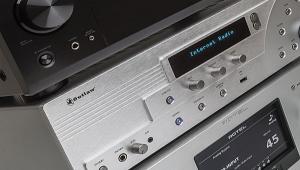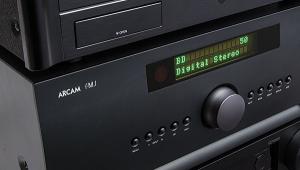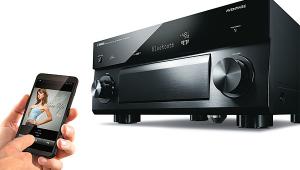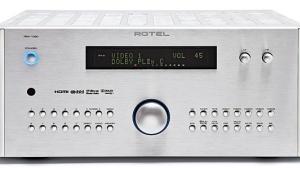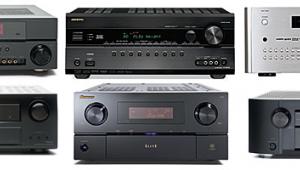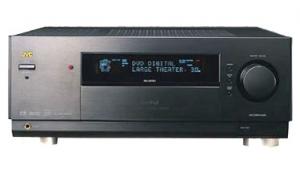HT Guide To AVR Features
 Basic Surround Decoding
Basic Surround DecodingToday's AVRs feature a ton of surround decoding features from Dolby and DTS, from basic 5.1-channel surround decoding to several ways of decoding stereo into 5.1-channel surround, or beyond.
HT's Bottom Line: You don't need to think about whether you want these; they're already in every AVR out there that includes surround sound.
 Next-gen Surround Decoding
Next-gen Surround Decoding
Blu-ray and HD DVD have given birth to new, superior surround decoding codecs. The most prevalent forms are Dolby Digital Plus, Dolby TrueHD, DTS-HD Master Audio, and uncompressed PCM, a higher resolution variant of the same coding used on the Compact Disc. The first AVRs that decode the new Dolby and DTS codecs are starting to appear in the market now.
Now here's the catch: nearly every HD DVD and Blu-ray player released so far has the ability to convert DD+ and TrueHD to PCM, which is then transmitted over HDMI. A fair number of AVRs on the market can accept and process hi-res, multichannel PCM over HDMI.
HT's Bottom Line: It's likely that your next disc player will play Blu-ray, HD DVD or both If you're shopping for an AVR later this year one of the newer models with decoding of the new codecs is something worth looking at. But at the least make sure you buy an AVR that can accept and process hi-res multichannel PCM over HDMI.
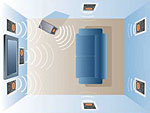 Extended Surround
Extended Surround
Most AVRs over $199 are 7.1-channel rigs with seven channels of onboard amplification and the ability to process stereo and 5.1-channel sources at 6.1- or 7.1-channels. There is very little source material encoded for extended surround playback specifically, and even the little that there is will playback just as convincingly in a properly setup 5.1-channel system. In very large rooms, particularly those in which some seating positions would be behind the side surround speakers, an additional pair of surrounds in the back of the room can be beneficial. This is seldom the case.
HT's Bottom Line: In the vast majority of rooms and systems 5.1-channels are just fine, so most of you will be better off doing a 5.1-channel system in your main room and powering a pair of stereo speakers in a second room.
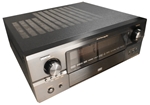 DSP Modes
DSP Modes
DSP stands for "digital signal processing." Since all AVRs have basic DD and DTS decoding many try to distinguish themselves with DSP listening modes that try to emulate certain "effects" or venues. While a scant few of these have genuine merit, like Lexicon's Logic 7, the bulk of these are classic bells and whistles. Hollywood's sound designers know what they're doing, so most of these "enhancements" are anything but.
HT's Bottom Line: Far more often than not, there's more style than substance here. Don't shun an AVR for having these but don't buy one just for that either.
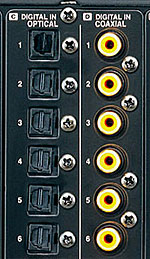 Digital Inputs
Digital Inputs
The number of digital audio inputs has always been important with AVRs. While this is still an important consideration, the proliferation of HDMI switching, which carries HD video and hi-res audio on a single cable. Nevertheless, coaxial and Toslink optical connections are still critical, and the former are still more coveted for the solidity of the cables and connections compared to the relatively flimsy nature of Toslink connectors.
HT's Bottom Line: You know how many sources of each type you have, so pick an AVR that has enough of each to accommodate your system and any planned upgrades. Just know as you upgrade that your next box and your next TV will have HDMI.
Multi-source/Multi-Zone
Simply put, this feature allows a user to watch/listen to one source in the main room where the AVR resides, while others listen to a separate source in another room, all from the same AVR. As mentioned above, 7.1-channel AVRs are now the norm, and many allow users to either use extended surround, or to setup a 5.1-channel system in the main room and use the additional two channels to feed a second room/zone. Some AVRs allow only audio to the second zone, while others allow audio and video.
HT's Bottom Line: Multi-source/Multi-zone is a real asset. If this interests you, make sure you find an AVR that does what you want it to in the second zone.
Essential Video Features HDMI Switching
HDMI Switching
HDMI is the current standard interface for high-definition audio and video sources and displays, including Blu-ray Disc and HD DVD. HDMI can carry high-definition video and multichannel, high-resolution audio over a single cable. A clutter killer to be sure. If you don't already own an HDMI source or display, we assure that the next one you buy will have this connection and you'll want to use it.
HT's Bottom Line: HDMI is an absolute must. Don't buy an AVR that doesn't include HDMI switching, and make certain the AVR you buy can retrieve and process hi-res multichannel PCM over HDMI. Not all HDMI-equipped AVRs can do this; you need one that does.
Video Up-conversion and Cross-conversion
Many AVRs at the higher price points don't merely switch video sources, but offer advanced video processing. Up-conversion and cross-conversion also sometimes called "video conversion," "transcoding," "scaling," or "upscaling." Upconversion refers to these AVRs' ability to scale incoming sources up (or down in some cases) for better imagery with the connected display. Cross-conversion refers to the ability of many of these AVRs to accept analog video sources- composite, component or S-Video- and convert them to digital for output over HDMI (some advanced models allow conversion every which way). This allows you to use a variety of sources and still connect to the display with a single cable and perform all audio and video switching in the AVR.
HT's Bottom Line: We don't like to waffle, but the quality of video processing integrated into AVRs has been variable in terms of performance and reliable functionality. When it's done well this is a huge plus that not only simplifies your system but also improves performance. Read our reviews to see which AVRs make the grade here.
 Component Video Switching
Component Video Switching
You're soaking in it. There are legacy component sources of all kinds out there, and virtually all of today's AVRs are equipped to handle them. As mentioned above, an increasing number can cross-convert component video to HDMI for a simple interface with your AVR and TV. If that latter feature is important for your system, make sure to ask directly- while the number is growing, not all AVRs at the lower price points can cross-convert component to HDMI.
HT's Bottom Line: Component switching is included in anything you'll buy over $199. If you're committed to your legacy component sources it's worth paying extra to get cross-conversion to HDMI.
 New School Connectivity
New School Connectivity
iPod- Many brands feature connections for add-on docks, or bridges that cost around $50 and allow you to not only connect your iPod to your AVR, but control it seamlessly through the AVR's menus.
HT's Bottom Line: There are 100 million iPods out there and counting. Who doesn't want more iPod connectivity in their life?
XM and Sirius Satellite Radio Ready
Most AVRs are "ready" for one or both of the satellite radio majors, which means a relatively inexpensive and easy to use antenna is all that's needed to playback either service through your AVR- provided you've subscribed to one or both.
 HT's Bottom Line: Satellite radio has far more compelling variety of program than terrestrial radio in many markets. Although it's changing, not all AVRs support both services, so if you're interested in this nail down your choice in satellite radio service before settling on your AVR.
HT's Bottom Line: Satellite radio has far more compelling variety of program than terrestrial radio in many markets. Although it's changing, not all AVRs support both services, so if you're interested in this nail down your choice in satellite radio service before settling on your AVR.
USB, Ethernet And Wi-Fi
A growing number of AVRs are moving past the iPod connectivity and going straight to the source- your PC. These allow you to stream Internet radio, your iTunes library, and more.
HT's Bottom Line: Our PCs are becoming more and more integral to our home entertainment. There isn't much here in the way of standards, but the more PC connectivity we can get the better in general.
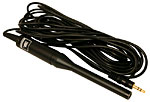 Auto Calibration and Room EQ
Auto Calibration and Room EQ
AVRs have processing power to spare, and more and more of them are putting that brainpower to use by setting up and calibrating your system for you. These AVRs come with microphones, and run a series of clicks or tones through the AVR and determine which speakers need to crossover to a sub and at what freqeuncy, and set the channel levels and delays, and then perform calculations and set up an EQ to achieve flat frequency response in room. Some manufacturers, like Denon and Onkyo license technology from Audyssey, while others, like Marantz, Pioneer and Sony, roll their own.
HT's Bottom Line: Adjusting an AVR requires some know-how and at least an additional $45 purchase for a sound pressure level meter. A lot people will never do this properly, so these features take the mystery and additional purchases out of the equation and therefore get the nod from us. But we encourage you to go a little further and check the settings yourself.
